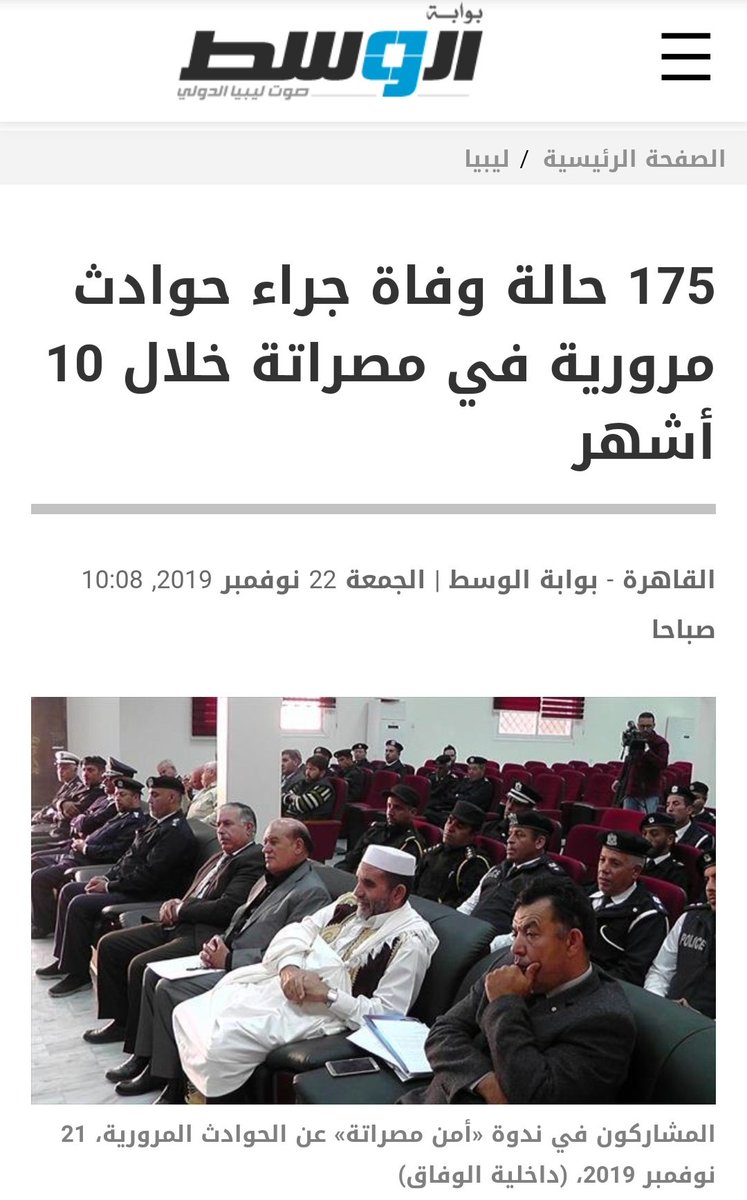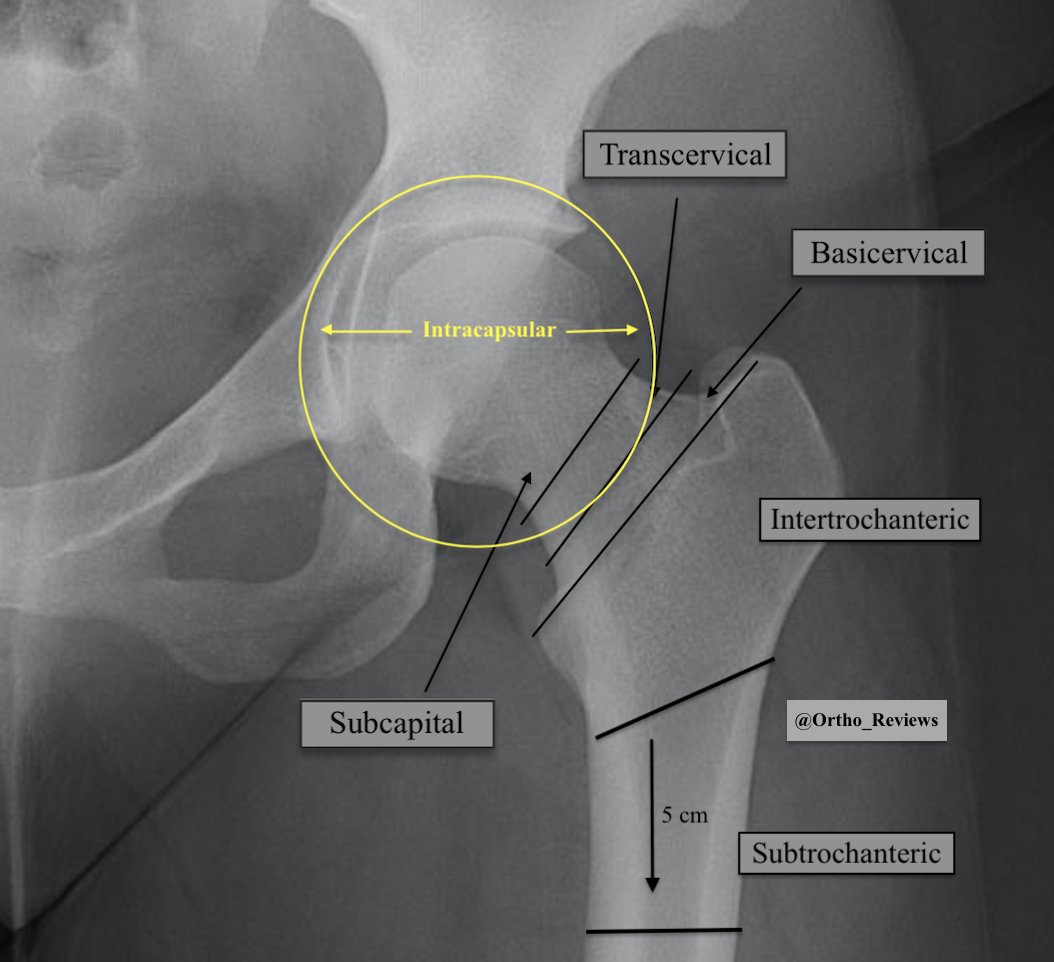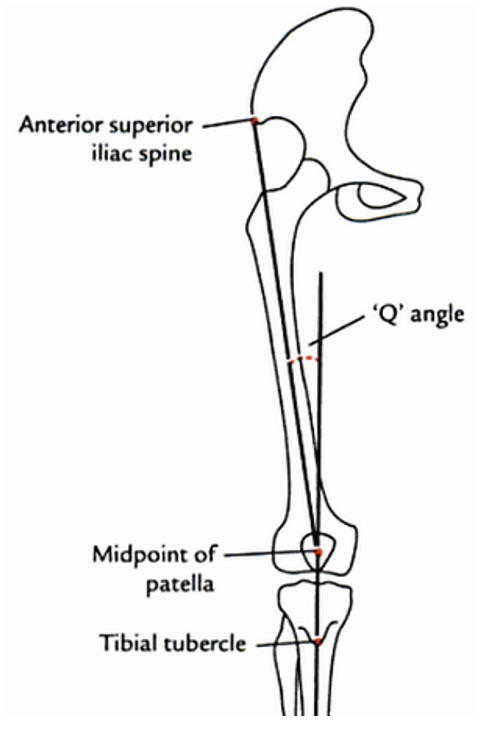Discover and read the best of Twitter Threads about #Ortho
Most recents (18)
Longer daily #sedentary time increases the risk of #Knee, #Hip and #back #pain
1. 20-25% of people aged 50 or more suffer from orthopedic problems such as knee joint pain, hip joint pain, back pain and knee stiffness. Sedentary lifestyle is a major risk factor for them.
1. 20-25% of people aged 50 or more suffer from orthopedic problems such as knee joint pain, hip joint pain, back pain and knee stiffness. Sedentary lifestyle is a major risk factor for them.
2. In a recent study, men with sedentary time of 7.5 hours or more/day had 45% higher risk of orthopedic problems as compared to those with daily sedentary time of <7.5 hours.
#MedTwitter #ortho
#MedTwitter #ortho
3. A pink-collar job, physical inactivity during leisure time, and passive (e.g. riding in a car or train) versus active (e.g. walking or riding a bicycle) transportation- were more commonly associated with orthopedic problems in people with daily sedentary time >7.5 hours.
If you're a medical student pursuing #ortho, you will almost certainly end up doing #awayrotations...
For M3s, that process is right around the corner!
But for us M4s, aways are over, and now I have nothing but time on my hands 😌
So let's do a thread on away applications 🧵1/
For M3s, that process is right around the corner!
But for us M4s, aways are over, and now I have nothing but time on my hands 😌
So let's do a thread on away applications 🧵1/
🦴When do you apply for aways?
Typically, you will be applying in the Spring of your 3rd year.
Of the places I applied, the earliest an application opened was in February and the latest was in May, but the majority of programs open applications in March - April. 2/
Typically, you will be applying in the Spring of your 3rd year.
Of the places I applied, the earliest an application opened was in February and the latest was in May, but the majority of programs open applications in March - April. 2/
🦴A quick note for M2s!
The timing of away apps is why I tell M2s interested in ortho that they should aim to do an ortho rotation by Jan/Feb at the latest when scheduling their M3 year.
Ideally, you should know if ortho is definitely for you before you apply for aways. 3/
The timing of away apps is why I tell M2s interested in ortho that they should aim to do an ortho rotation by Jan/Feb at the latest when scheduling their M3 year.
Ideally, you should know if ortho is definitely for you before you apply for aways. 3/
An in-depth review of ACL injury.
If you're interested in sports medicine, you won't want to miss this one!
🦴⚒️🧵👇
To view our past reviews, check out:
💻 myorthoreviews.com📱
If you're interested in sports medicine, you won't want to miss this one!
🦴⚒️🧵👇
To view our past reviews, check out:
💻 myorthoreviews.com📱
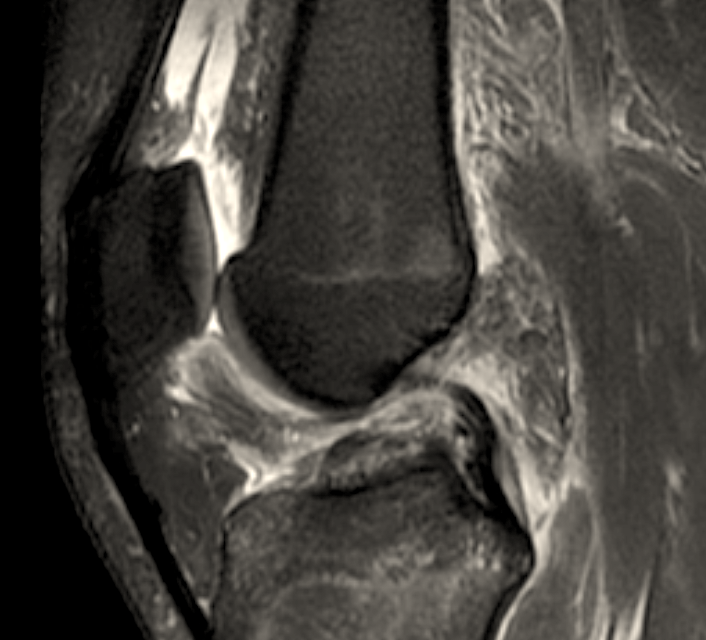
The ACL is the primary restraint to anterior tibial translation and also plays a role in rotary stability
It is composed of two bundles, named based on their tibial insertions:
✯ Anteromedial
✯ Posterolateral
What structure separates the femoral insertions of the two bundles?
It is composed of two bundles, named based on their tibial insertions:
✯ Anteromedial
✯ Posterolateral
What structure separates the femoral insertions of the two bundles?
An in-depth review of Proximal Humerus Fractures.
If you're interested in orthopedics you won't want to miss this one!
🦴⚒️🧵👇
To view our past reviews visit: myorthoreviews.com
If you're interested in orthopedics you won't want to miss this one!
🦴⚒️🧵👇
To view our past reviews visit: myorthoreviews.com

Proximal humerus fractures are common, accounting for around 5% of all fractures with increasing frequency with age.
They are most common in elderly females and are considered a fragility fracture.
Which nerve is most commonly injured in proximal humerus fractures?
They are most common in elderly females and are considered a fragility fracture.
Which nerve is most commonly injured in proximal humerus fractures?
The axillary nerve passes medial to the surgical neck and is most commonly injured in proximal humerus fractures.
Sensation testing over the lateral shoulder may be performed as deltoid testing may be difficult.
Which artery provides the main blood supply to the humeral head?
Sensation testing over the lateral shoulder may be performed as deltoid testing may be difficult.
Which artery provides the main blood supply to the humeral head?
An in-depth review of Clavicle Fractures.
If you're interested in orthopedics you won't want to miss this one!
🦴⚒️🧵👇
If you're interested in orthopedics you won't want to miss this one!
🦴⚒️🧵👇

Clavicle fractures are typically the result of a fall onto the shoulder and are one of the most common fractures in children.
They may also occur from direct trauma, seizures, or a fall onto an outstretched hand (FOOSH).
They may also occur from direct trauma, seizures, or a fall onto an outstretched hand (FOOSH).
An in-depth review of intertrochanteric and subtrochanteric hip fractures.
If you're interested in orthopedics you won't want to miss this one!
🦴⚒️🧵👇
If you're interested in orthopedics you won't want to miss this one!
🦴⚒️🧵👇

An in-depth review of Ankle Fractures.
If you're interested in orthopedics you'll definitely want to check this review out!
🦴⚒️🧵👇
If you're interested in orthopedics you'll definitely want to check this review out!
🦴⚒️🧵👇

The ankle is a complex hinge joint comprised of the tibial plafond, talar dome, and distal fibula.
Ankle fractures most commonly occur in elderly females, with roughly 70% being isolated malleolar, 20% being bimalleolar, and 5-10% being trimalleolar. (1)
Ankle fractures most commonly occur in elderly females, with roughly 70% being isolated malleolar, 20% being bimalleolar, and 5-10% being trimalleolar. (1)
An in-depth review of Terrible Triad Injuries.
If you're interested in orthopedics you won't want to miss this one!
1/12
If you're interested in orthopedics you won't want to miss this one!
1/12

Terrible triad injuries are complex posterior elbow dislocations associated with coronoid and radial head fractures as well as capsular and ligamentous injuries.
An in-depth review of pediatric femoral shaft fractures.
If you're interested in orthopedics or pediatrics you'll definitely want to check this review out!
1/10
If you're interested in orthopedics or pediatrics you'll definitely want to check this review out!
1/10

Pediatric femoral shaft (PFS) fractures constitute a small portion of pediatric fractures roughly 1-2% with a bimodal age distribution
Most common causes:
✯ Toddlers: falls
✯ Teenage/adolescent: MVA
Most common causes:
✯ Toddlers: falls
✯ Teenage/adolescent: MVA
In children younger than walking age child abuse must be suspected. As high as 80% of PFS fractures in this age group are due to child abuse.
In the toddler age group as high as 25% of PFS fractures are due to child abuse, so it must be ruled out.
In the toddler age group as high as 25% of PFS fractures are due to child abuse, so it must be ruled out.
An in-depth review of metacarpal fractures.
If you're interested in orthopedics you'll definitely want to check this review out!
What is an eponym for this fracture?
If you're interested in orthopedics you'll definitely want to check this review out!
What is an eponym for this fracture?
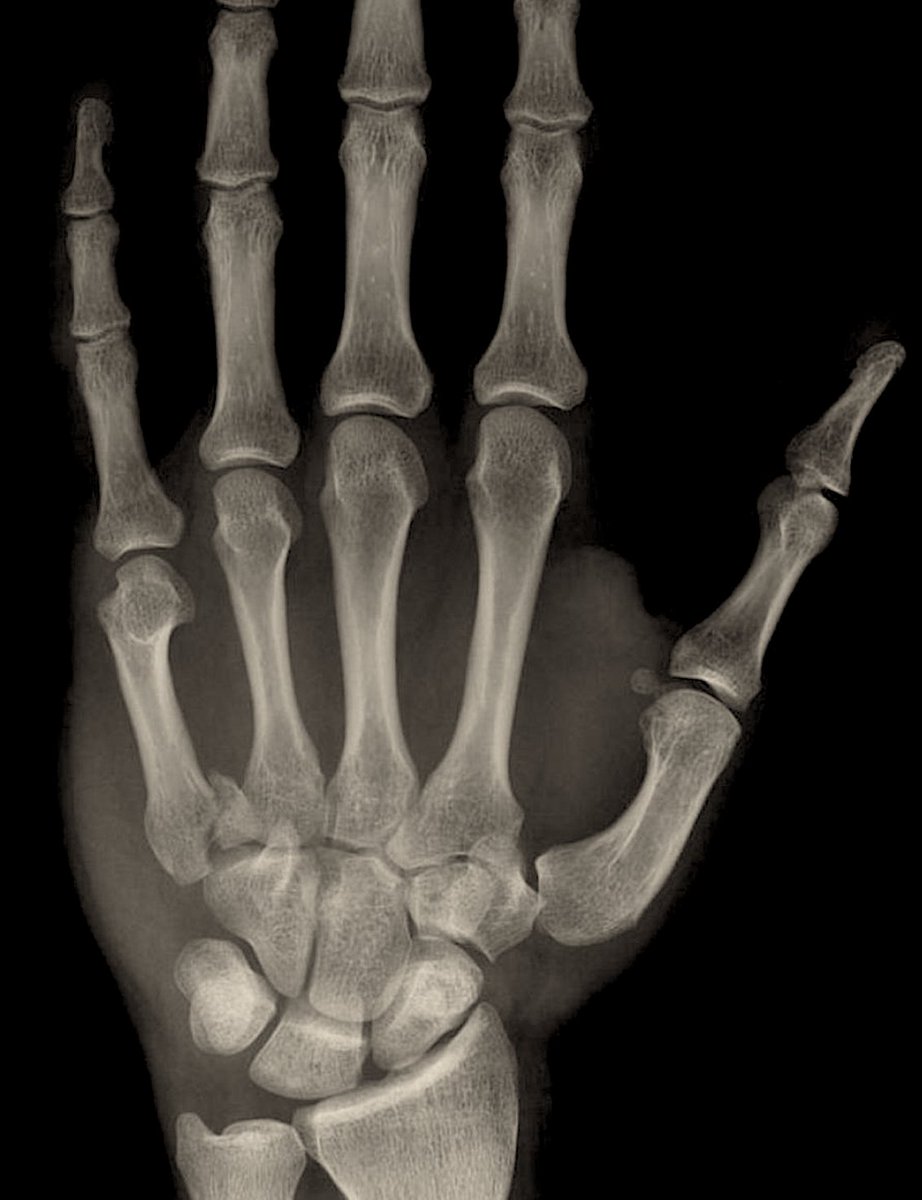
This patient is presenting with an intraarticular fx of the 5th metacarpal base.
This fracture is similar to a Bennett's fx (an intraarticular fx of the 1st metacarpal base).
This fracture goes by a few eponyms: a reverse bennett, baby bennett, or mirrored bennett.
This fracture is similar to a Bennett's fx (an intraarticular fx of the 1st metacarpal base).
This fracture goes by a few eponyms: a reverse bennett, baby bennett, or mirrored bennett.

A Ronaldo fracture is a comminuted fracture of the 1st metacarpal base. (shown above)
Displacement of a Reverse Bennett fracture is due to which of the following muscles?
Displacement of a Reverse Bennett fracture is due to which of the following muscles?
An in-depth review of Slipped Capital Femoral Epiphysis (SCFE).
If you're interested in orthopedics or pediatrics you'll definitely want to check this review out!
1/
If you're interested in orthopedics or pediatrics you'll definitely want to check this review out!
1/

SCFE’s are an adolescent hip pathology with an average age of onset of 11-12.
The diagnosis may be initially missed because the patient may present with thigh or knee pain.
The diagnosis may be initially missed because the patient may present with thigh or knee pain.
Risk factors include:
✯ Obesity
✯ Male gender
✯ Prior radiation
✯ Endocrine abnormalities
✯ Certain ethnicities (e.g. African American)
Obesity is one of the most important and modifiable risk factors.
✯ Obesity
✯ Male gender
✯ Prior radiation
✯ Endocrine abnormalities
✯ Certain ethnicities (e.g. African American)
Obesity is one of the most important and modifiable risk factors.
1/
OK! Here goes nothing. My first ever #tweetorial on the Coordinated Interview Release process for #Match2021.
This will be broken up into five parts:
1) What
2) Why
3) Who
4) How
5) Alternatives
#MedEd #MedStudentTwitter
Formatting inspired by the great @DrStevenTChen.
OK! Here goes nothing. My first ever #tweetorial on the Coordinated Interview Release process for #Match2021.
This will be broken up into five parts:
1) What
2) Why
3) Who
4) How
5) Alternatives
#MedEd #MedStudentTwitter
Formatting inspired by the great @DrStevenTChen.
2/
Starting with WHAT. What is a coordinated interview release?
A coordinated interview release 📨 is when numerous residency programs (ideally all programs*) agree to send out their interview invites on the same pre-determined day (or time frame) to applicants.
Starting with WHAT. What is a coordinated interview release?
A coordinated interview release 📨 is when numerous residency programs (ideally all programs*) agree to send out their interview invites on the same pre-determined day (or time frame) to applicants.
2.5/
*It's important to note that programs are constrained by factors out of their control – especially this year with #COVID19 & the coordinated release process being new for most specialties. Those who could not participate this year should in no way be viewed negatively.🆗!!
*It's important to note that programs are constrained by factors out of their control – especially this year with #COVID19 & the coordinated release process being new for most specialties. Those who could not participate this year should in no way be viewed negatively.🆗!!
Meniscus injury: a complete review.
1/15
@MedTweetorials @RosenelliEM
#MedEd #OrthoTwitter #Tweetorials
1/15
@MedTweetorials @RosenelliEM
#MedEd #OrthoTwitter #Tweetorials

The meniscus function is two-fold. It increases stability by deepening the tibial surface and it aids in force transmission by increasing the contact area to spread force over a larger surface area. The meniscus is responsible for 50% of load transmission across the knee. (1)
2/
2/
Septic arthritis is generally monoarticular and involves either the knee or hip. The hip is more commonly affected in children whereas the knee is in adults. Early intervention is imperative for preserving the affected joint.
2/10
2/10
Risk factors include age > 80, DM, RA/OA/Gout, HIV, unprotected sex, IV drug abuse, and joint replacement. Presenting symptoms may include fever (60%), pain, swelling, warmth, and erythema of the joint.
3/10
3/10
Osteopetrosis is a disease that results from defective osteoclast function. Failed bone resorption leads to dense bone that may cause fracture, bone marrow encroachment, or skull foramen narrowing.
2/12
2/12
3/12 Osteoclasts derive from which of the following precursor cells?
#Benghazi neurosurgery today: young man referred from al Marj after being in a motor vehicle accident and injured his neck and spine. Removal of vertebral bone (laminectomy) for pressure relief on the spinal cord. Of course motor vehicle accident 👇
1/7
#libya #بنغازي #ليبيا


1/7
#libya #بنغازي #ليبيا

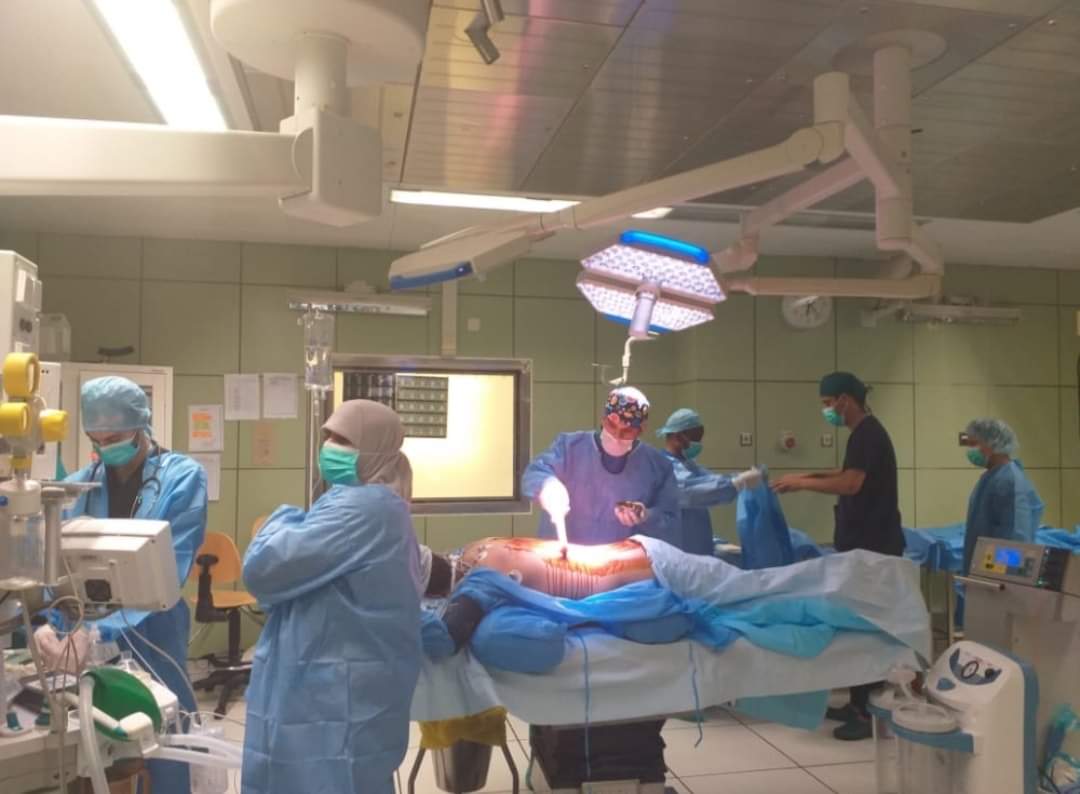

Traffic deaths and injuries are a major public health problem in #Libya. Bad cars & roads, recklessness, long dark roads and high ratio of cars have put Libya 🇱🇾 on top of the world when it comes to traffic injuries and deaths.
#ليبيا
2/7

#ليبيا
2/7


Motor vehicle accidents are #1 killer in Libya.
In 2018 in average 17 people died in Misurata each month due to traffic (175 deaths/10months, pop300k)
3/7
#ليبيا
In 2018 in average 17 people died in Misurata each month due to traffic (175 deaths/10months, pop300k)
3/7
#ليبيا
